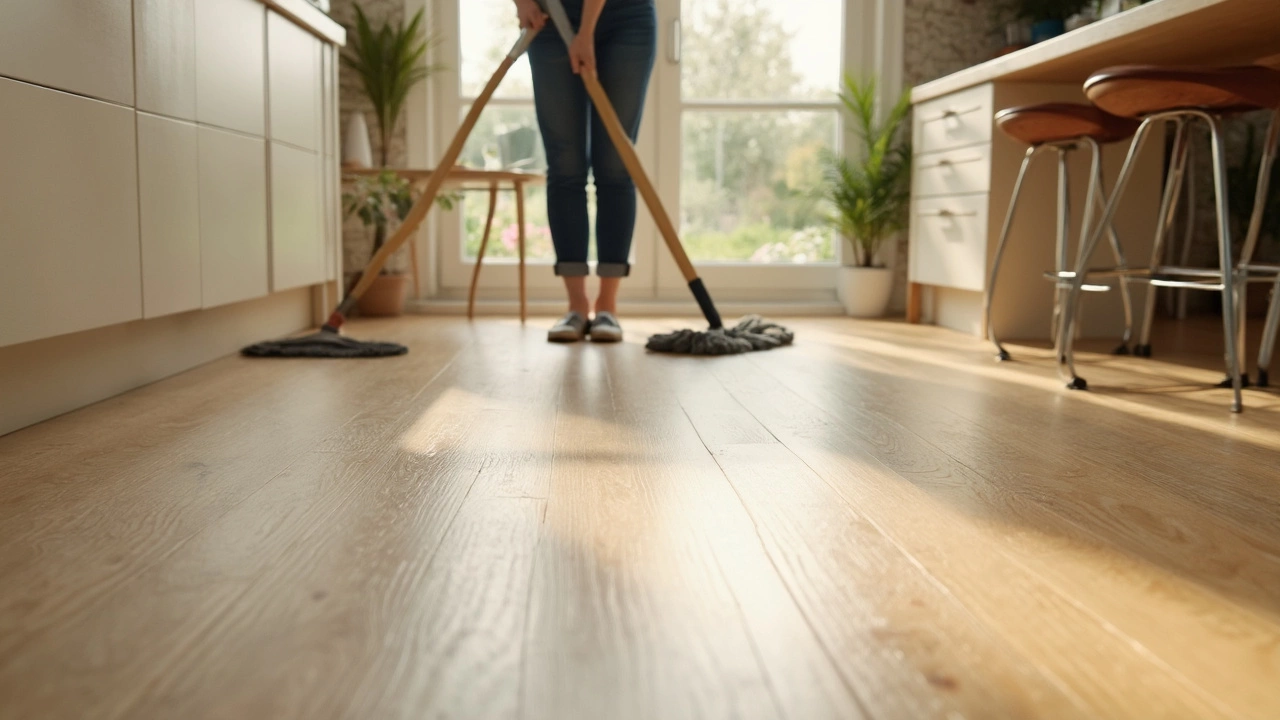Curious about how long vinyl flooring holds up? This article breaks down what really affects the lifespan of vinyl floors, from everyday wear to cleaning hacks. Get tips on making your floors last longer and avoid common mistakes that can ruin them fast. Find out when it’s time to replace, and what to expect from today's top brands. Perfect if you want your floors to look good for years without the guesswork.
Flooring Lifespan: How Long Your Floors Really Last
Ever wonder why one floor looks brand new after ten years while another shows wear in just a few months? The answer lies in the material, how it’s installed, and how you treat it. Knowing the typical lifespan of tiles, wood, laminate, and carpet helps you plan budgets and avoid nasty surprises.
Tile is the toughest of the bunch. A well‑installed porcelain or ceramic tile can easily hit 30‑50 years, sometimes longer if the subfloor stays stable. The main threats are cracked grout, heavy impacts, and moisture that seeps behind the tiles. Simple steps like sealing grout every few years and using mats in high‑traffic zones can keep tiles looking fresh.
What Affects Flooring Lifespan
Foot traffic is the biggest wear factor. A hallway with constant footfall will age faster than a guest bathroom. Sunlight also matters – UV rays fade hardwood and carpet colors, so window‑facing rooms may need rugs or UV‑protective film. Moisture is a silent killer for wood and laminate; water stains, swelling, and mold can cut life in half. Finally, the quality of the installation matters. Poorly leveled subfloors or rushed grout work create weak spots that fail early.
Different materials handle these challenges uniquely. Hardwood lasts 20‑30 years when refinished regularly, but cheap engineered wood may only survive 10‑15 years if the finish wears through. Laminate sits in the middle, offering 15‑20 years of decent performance but struggling with moisture. Carpet is the most variable – low‑pile commercial carpet can survive 8‑10 years, while plush residential carpet often needs replacement after 5‑7 years due to stains and crushing.
Tips to Extend the Life of Your Floors
Start with the right product for the room. Choose water‑resistant laminate for basements, high‑grade porcelain for kitchens, and a durable, stain‑resistant carpet for family rooms. Next, protect high‑traffic spots with area rugs or runner mats. A rug under a dining table, for instance, saves the floor from chair legs and spills.
Regular maintenance is non‑negotiable. Sweep or vacuum daily to remove grit that can scratch surfaces. Mop wood and laminate with a damp (not wet) cloth and a cleaner made for the specific finish. For tile, use a pH‑balanced cleaner and reseal grout annually in wet areas.
When damage does appear, act fast. A small chip in tile can be patched with epoxy before water seeps in. Scratches on hardwood can be sanded and refinished locally, adding years to the floor’s life. If carpet shows a stubborn stain, spot‑clean with a mild detergent instead of waiting for it to set.
Finally, schedule professional inspections every few years. A flooring expert can spot early signs of movement, moisture, or wear that the everyday eye misses. Early fixes are cheaper and keep the floor performing longer.
Understanding the factors that affect flooring lifespan and following simple care steps lets you enjoy beautiful floors without constant replacements. Whether you love the sleek look of tile, the warmth of wood, or the comfort of carpet, a little attention goes a long way.
